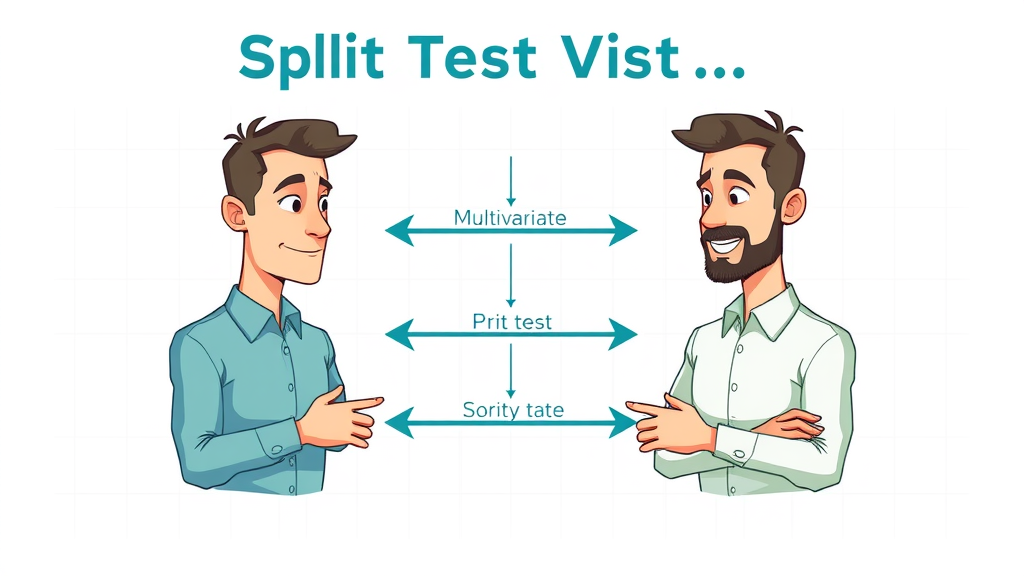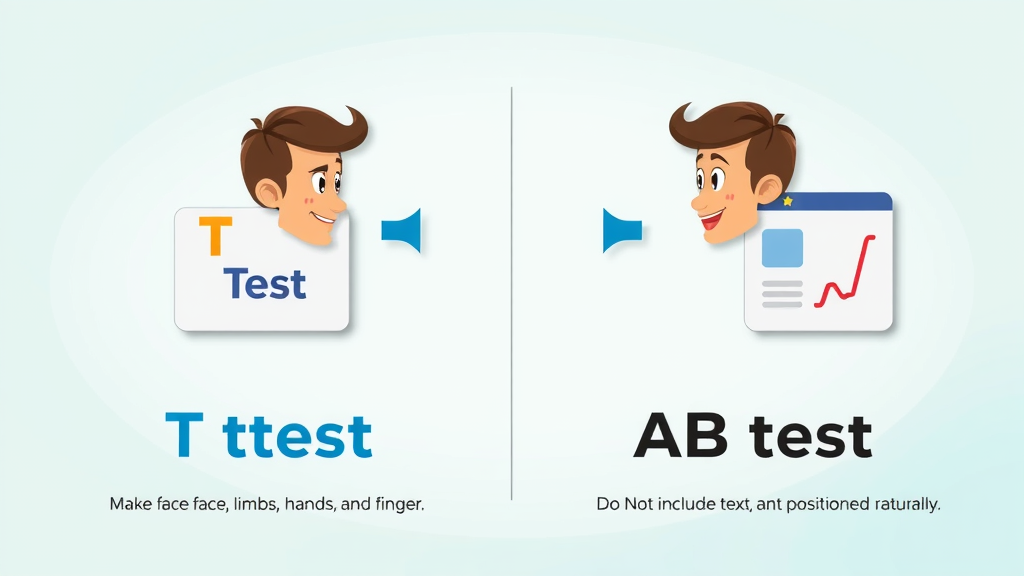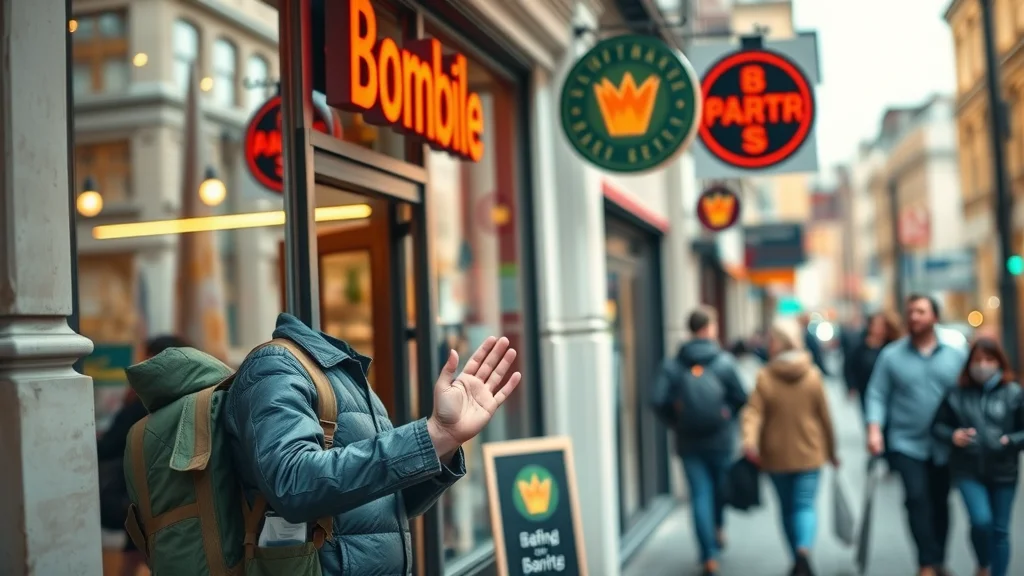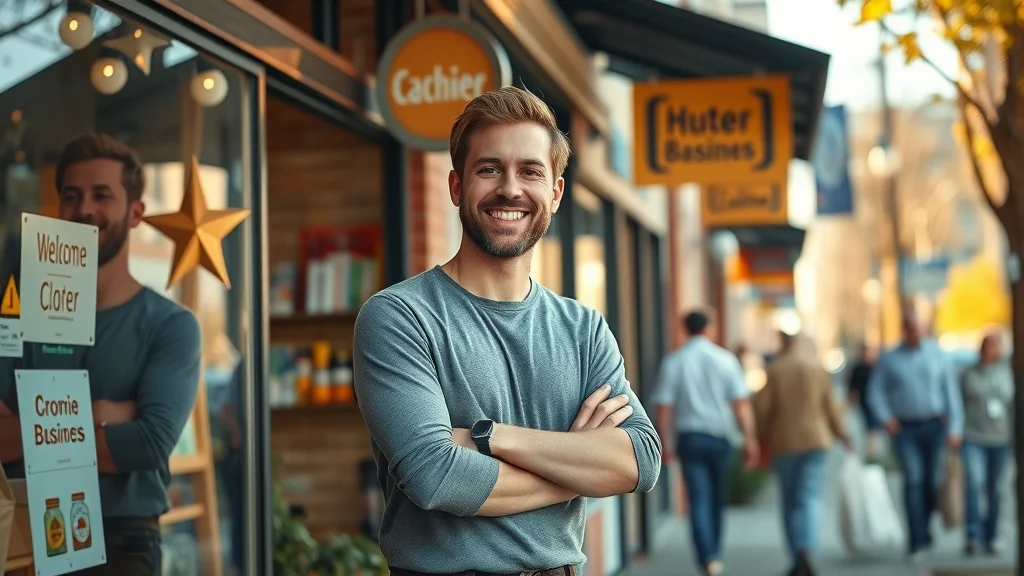Did you know that over 70% of top-performing companies rely on A/B testing to drive incredible conversion rates and explosive business growth? If you’re not harnessing the full power of split testing and advanced multivariate techniques, you’re missing out on the secret weapons behind today’s most successful digital marketing campaigns. This comprehensive guide unveils industry-proven A/B testing hacks, helping you turn ordinary campaigns into extraordinary winners—one test at a time.
What You’ll Learn
- How A/B testing, split testing, and multivariate testing work—and which to use for your goals
- How to pick the ideal A/B testing tool for accurate, actionable results
- Insider tips and unconventional hacks for mastering split tests, multivariate tests, and optimizing conversion rates
- How to avoid common mistakes (and make the most of every test result)
Unlocking the Power of A/B Testing: Startling Stats and Unconventional Insights

- Discover why over 70% of top-performing companies rely on a/b testing—and how you can apply the ultimate hacks to transform your conversion rate. Learn why split testing and multivariate test strategies are the secret weapons behind successful marketing campaigns.
A/b testing has rapidly become the cornerstone of digital marketing efforts . According to industry research, organizations that systematically use split testing and multivariate testing outperform competitors by identifying what truly works for their users. Real-world brands don’t just guess—they test, iterate, and refine every element from their landing page design to their subject lines until they achieve statistically significant growth.
But why is a/b testing so incredibly powerful? Unlike traditional marketing methods that often rely on intuition or static best practices, a/b testing helps you discover what actually resonates with your unique audience . It removes guesswork and lets you adapt quickly to changes in user behavior and search engine algorithms. Whether it’s testing a new CTA button or running a multivariate test on a landing page layout, the data you collect delivers actionable insights to drive up your conversion rate and boost your bottom line.
Essential A/B Testing Fundamentals for Every Marketer
- Defining a/b testing, split testing, and multivariate testing
- How a/b testing enhances your landing page and boosts conversion rates

A/B testing is an experimental method used to compare two versions of a web page or element—such as a CTA button, subject line, or landing page layout—to see which performs better with your audience. In its simplest form, visitors are randomly assigned to “Version A” or “Version B.” Their behavior—captured via precise metrics like conversion rate and bounce rate—reveals which variant delivers superior results.
Split testing is often used interchangeably with A/B testing and involves dividing your audience between two different variants. The key is isolating a single element (such as button color) to determine direct impact. Multivariate testing takes things further by testing multiple variables simultaneously—ideal for optimizing complex landing pages where interactions between elements matter. By utilizing these layered testing approaches, savvy marketers unlock unwavering clarity about what drives engagement and conversion rates on their web pages.
How A/B Testing Works with Modern Testing Tools
- Selecting the right testing tool for accurate test results
- Using google analytics to track conversion rates and bounce rate
Choosing the best A/B testing tool is essential for collecting reliable data and maximizing efficiency. Today’s top split testing platforms—like Optimizely, VWO, and Google Optimize—offer robust integration with Google Analytics, enabling powerful tracking of conversion rates, bounce rate, user experience, and more.
With seamless data visualization, these platforms allow marketers to observe every critical metric, compare test results in real time, and ensure every split testing experiment is statistically significant. By leveraging Google Analytics for deeper analysis, marketers gain insights into user behavior patterns, identify friction on landing pages, and achieve ongoing conversion rate optimization across the entire customer journey.
Mastering Split Testing and Multivariate Test Techniques
- Split test vs split testing: What’s the difference?
- Multivariate testing: When should you go beyond basic a/b testing?
While split tests and basic split testing often refer to the same process of comparing two versions, the distinction matters when describing broader testing strategies. A simple split test focuses on a particular element—for example, altering the color of a call-to-action button—while full-scale split testing can involve segmenting entire user flows to optimize marketing efforts.
Multivariate testing enters the scene when your landing page or campaign features more than one variable in question. Instead of individually testing options (A vs B), multivariate test setups assess numerous combinations simultaneously. Use advanced multivariate testing when you want to optimize complex pages, such as forms, layouts, and messaging, enhancing user experience and customer conversions far beyond what single-variable tests allow.
Real-World Examples: Split Tests in Action
- Proven split test strategies for landing pages and subject lines
- How to determine statistically significant test results

Imagine you want to increase conversions on your new product’s landing page. You design two versions: one with a green CTA button and another with a blue button. Using your chosen testing tool, you launch a split test to direct half your visitors to each variant. Tracking metrics like conversion rate, bounce rate, and overall engagement, your analytics dashboard (integrated with Google Analytics) reveals which color drives more sign-ups.
Other real-world examples include testing different subject lines in marketing emails or varying headlines and imagery on landing pages. To ensure your test results are meaningful, always calculate the necessary sample size and strive for statistical significance . This prevents random chance from skewing your findings and ensures you can confidently optimize your digital marketing campaigns for tangible business goal results.
Your A/B Testing Toolkit: Tools, Metrics, and Implementation
| Tool Name | Key Features | Pricing (as of 2024) | Google Analytics Integration |
|---|---|---|---|
| Optimizely | Multivariate tests, visual editor, advanced segmentation, ROI tracking | Starts at $50/month | Native, advanced |
| VWO | A/B, split & multivariate, heatmaps, recording, funnel analysis | From $200/month | Seamless, built-in |
| Google Optimize | A/B, multivariate, redirect tests, audience targeting | Free (Standard), Paid (360) | Direct, native support |
- Setting up your first test: critical steps and common pitfalls

- Calculating sample size for reliable statistical significance
Launching your first A/B test is exciting—but it pays to have a process. Begin by defining your objective, choosing the relevant landing page or subject line, and selecting a robust testing tool from the comparison table above. Next, establish a clear hypothesis. Remember: start with a single variable to avoid confounding results.
Before going live, calculate your required sample size to ensure results are statistically significant. Many testing tools come with built-in sample size calculators. Avoid the trap of stopping tests too early—insufficient data can lead to false positives and misleading conclusions. Additionally, integrate Google Analytics to monitor bounce rate, user behavior, and conversion rate for richer dataset analysis and continuous optimization.
Interpreting Test Results and Maximizing Conversion Rates
- Avoiding false positives: Ensuring statistically significant outcomes
- How to use test results to optimize conversion rates and reduce bounce rate
Accurate interpretation of test results is the crux of successful A/B testing. Always verify the statistical significance of every result—relying on analytics, not gut feeling. A false positive (where a perceived “winner” is driven by random chance) can waste precious time and budget, so use the significance calculators provided with your testing tool.
Once statistically significant results are confirmed, deploy winning variants broadly to optimize conversion rates and reduce bounce rate. Analyze the impact on your business goals and continue iterating. Over time, cumulative improvements across subject lines, landing pages, CTAs, and other elements form the backbone of high-performance marketing programs.
Unconventional A/B Testing Hacks for Expert-Level Results
- Innovative hacks for testing landing pages, subject lines, and more
- Advanced a/b testing with multivariate testing logic

Ready to level up? The savviest marketers break free of cookie-cutter split testing and explore unconventional hacks. For example, test entirely new content structures, dramatic CTA copy changes, or unique value propositions in your landing pages. Experiment with subtle timing tweaks in automated emails for improved subject line engagement and open rates.
As your team gets comfortable with split tests, start applying multivariate testing logic . Build multifactor experiments measuring interactions—like headline, color scheme, and image swaps—managing larger sample sizes for more granular, user-focused optimization. Each advanced approach adds a layer of sophistication, amplifying conversion gains beyond what basic A/B tests deliver.
The Role of Bounce Rate and Sample Size in A/B Testing Success
- How bounce rate informs split testing
- Determining optimal sample size for statistically significant a/b testing
Bounce rate is a crucial health metric for any A/B testing program. High bounce rates can signal a disconnect in user experience, highlighting landing pages or variants that require urgent attention. Use split testing results to experiment with layouts and content aimed at keeping users engaged.
Every effective test needs an appropriate sample size to minimize error and maximize the reliability of your results. Too small a sample, and you risk random outcomes; too large, and you’ll waste valuable resources. Utilize built-in calculators or widely accepted sample size formulas to make your A/B tests both scientifically rigorous and efficient.
Conversion Rate Optimization: Beyond the Basics

- From test result to conversion rate breakthrough: actionable next steps
- Improving landing pages with a/b testing insights
True conversion rate optimization starts by acting on test results. After identifying top-performing variants—be it a new landing page format or an irresistible subject line—implement improvements widely and re-test over time. Incorporate lessons learned across channels for exponential impact.
Prioritize modifications on high-traffic landing pages to maximize ROI, and don't overlook how user experience tweaks—such as page load speed or visual clarity—can further lift conversion rates. Actionable insights from a/b testing should be continually fed back into the optimization cycle, transforming your marketing strategy into a data-driven powerhouse.
How to Use Google Analytics and Testing Tools for Maximum Impact
- Tracking conversion rates, bounce rate, and more efficiently
- Integrating a/b testing results with google analytics for continuous improvement
Pairing your A/B testing tool with Google Analytics unlocks advanced tracking capabilities. Monitor all relevant KPIs—conversion rate, bounce rate, session duration, and revenue churn—through custom dashboards for granular insights. Easily identify which landing pages, funnels, or subject lines show the best lift.
Use google analytics to create an iterative feedback loop: after actioning test results, continue monitoring for shifts in user behavior and unexpected trends. This integrated approach powers your ongoing optimization, making every marketing effort more intentional and impactful.
Learning from the Experts: Proven Quotes on A/B Testing
“A/B testing is the gold standard for evidence-based marketing decisions.” – CRO Expert
“Without statistically significant results, you’re just guessing.” – Digital Marketer

What is the meaning of AB testing?
- A/B testing is a method of comparing two versions of a webpage or element to see which performs better, typically measured by conversion rates or engagement metrics.
A/B testing is a straightforward yet powerful experiment where you split traffic between two options—version A and version B—and analyze which performs best. By focusing on key metrics like conversion rate or bounce rate, a/b testing gives marketers a data-driven path to improve user experience and hit business goals.
What is an example of AB test?
- An example is creating two versions of a landing page, each with a different call-to-action button, and measuring which yields a higher conversion rate through split testing.
One classic example of a/b testing is changing the CTA button color or wording on your landing page. By directing half of your visitors to version A and the other half to version B (each with a distinct CTA), you can clearly see which CTA leads to more clicks, signups, or purchases—providing a direct improvement in your test results.
What is ABC testing?
- ABC testing compares three variations (A, B, and C) of a web element to determine the most effective for increasing conversion rates, going beyond standard a/b testing or split testing.
While a/b testing only compares two options, ABC testing includes a third variable, often used when several options have the potential to improve conversion rates. For instance, a landing page could be displayed in three different layouts or color schemes to see which design yields the highest engagement. This method is sometimes called “bucket testing.”
What is the difference between t test and ab test?
- A t-test is a statistical method to compare means, while a/b testing is an applied process comparing two variations to discover which performs best, using statistical significance to validate outcomes.

A t-test is a formal statistical method used in academia to compare the means of two data samples. In contrast, a/b testing is a practical, web-driven approach used to compare the performance of two versions of a web page or element under real-world conditions. While a/b testing uses t-tests or similar statistical methods to confirm findings are statistically significant, its focus is always on practical outcomes—such as which landing page drives the most conversions.
Common Mistakes in A/B Testing (And How to Avoid Them)
- Running tests without a defined hypothesis or incorrect sample size
- Ignoring statistical significance and bouncing rate data
- Misinterpreting test results or not segmenting audience properly

Mistakes in a/b testing can undermine months of marketing efforts. Common pitfalls include launching tests without a clear hypothesis, using the wrong sample size, or acting on results before achieving statistical significance. Overlooking bounce rate data or failing to properly segment your audience can skew results, rendering them useless (or even harmful) when rolled out across your marketing channels.
To avoid these errors, always set a specific business goal for every split test, use industry-recommended calculators for sample size, and wait for full statistical confidence before making changes. Segment your data to account for different audience behaviors, and never stop a test prematurely.
Actionable Tips to Fix A/B Testing Flaws
- Ensuring accurate split testing methodology
- Using multivariate testing when simple split testing isn't sufficient
For accurate, impactful a/b testing, stick to a disciplined methodology: test one variable at a time, calculate the required sample size for each group, and fully document your hypothesis in advance. If you suspect interactions between elements (e.g., headline and button text), use multivariate testing to capture complexities that single split tests might miss.
Additionally, use post-test analysis tools to review how each variant impacted not just conversion rate, but also secondary metrics like bounce rate and session length. This holistic approach will help you catch hidden winners and refine your optimization strategy for even deeper marketing wins.
Top A/B Testing Hacks to Maximize Your ROI
- Always define clear objectives for all split and multivariate tests
- Prioritize high-traffic landing pages for a/b testing
- Leverage subject line and subject lines tests for email conversion rates
- Test one change at a time to isolate impact
- Analyze bounce rate and conversion rate changes, not just clicks
- Use statistical significance calculators to validate outcomes
- Continuously iterate based on test results and market feedback

These actionable hacks are your fast lane to stellar ROI: Always start with strong objectives tied to your business goals. Run split tests on high-impact landing pages, experiment with subject lines in email campaigns, and adjust only one element at a time. Review shifts in both bounce rate and conversion rate—not just raw clicks. And, most importantly, iterate relentlessly. The most successful brands never stop testing and tweaking in pursuit of growth.
Key Metrics & KPIs to Track in A/B Testing
- Conversion rate
- Test result significance
- Bounce rate
- Sample size
- Landing page KPIs
- Subject line open rates
| Metric | Description | How to Track |
|---|---|---|
| Conversion Rate | The % of users completing a desired action on your web page | Testing Tool + Google Analytics |
| Sample Size | Number of observations or users in each variant | Sample Size Calculator, Native Tool Reports |
| Statistical Significance | Likelihood results are due to change, not random chance | Built-in Calculators, QA Review |
| Bounce Rate | Share of users who leave after the first interaction | Google Analytics |
By regularly tracking these metrics, you’ll spot both quick wins and long-term optimization opportunities. Integrated dashboards help you stay agile and ready to pivot your optimization strategy as needed.
Expert FAQ on A/B Testing, Split Testing, and Conversion Optimization
- What is the minimum sample size for a statistically significant a/b test? The minimum sample size varies depending on desired confidence level, expected effect size, and baseline conversion rate. Use sample size calculators—most testing tools include them—to ensure your test results are valid and not mere random chance.
- When should you use multivariate testing over split testing? Choose multivariate testing when you want to understand the combined effects of multiple variables on your web page. This is ideal for complex landing pages or when several elements could interact and influence conversion rate together.
- How can you interpret ambiguous test results effectively? When test results are unclear, check for adequate sample size, test for statistical significance, and review secondary metrics such as bounce rate or time on page. Sometimes, more nuanced segmentation is required to identify patterns across audience groups.
- What common metrics should you monitor for ongoing a/b testing success? Regularly monitor conversion rate, bounce rate, statistical significance, and the performance of individual landing pages and subject lines. Continual tracking keeps your optimization on course and highlights where further testing is needed.
Integrating A/B Testing Results with Broader Marketing Strategy
- Leveraging test results for holistic conversion rate optimization
- Using insights from split test and multivariate tests across channels
Don’t let test results exist in a silo. Smart marketers apply a/b testing insights across their digital marketing mix—using winners from split tests and multivariate testing to improve paid ads, social campaigns, SEO, and the entire user experience. Every new test builds organizational knowledge, giving you a competitive edge that compounds over time.
Integrate a/b test results with broader analytics to guide content, design, and user journey updates. Cross-channel learning ensures your business keeps evolving in line with both customer preferences and changing search engine or market dynamics.
Final Thoughts on A/B Testing: Turning Data into Real Growth
- Mastering a/b testing and advanced split testing techniques yields lasting improvements in landing pages and conversion rates. Make a/b testing a core part of your optimization strategy for consistent marketing wins.
Take action: Commit to ongoing a/b testing as a central part of your marketing strategy, and embrace both the science and creativity of continuous optimization.
Sources
To deepen your understanding of A/B testing and enhance your optimization strategies, consider exploring the following authoritative resources:
- “A/B Testing Best Practices You Should Know” ( invespcro.com )
This article provides a comprehensive guide on determining the appropriate sample size to achieve statistical significance, ensuring your test results are reliable and actionable.
- “A/B Testing Best Practices: How to Build Experiments That Work” ( segment.com )
This resource offers insights into creating unique test variants and scheduling tests effectively, helping you design experiments that yield meaningful results.
By delving into these resources, you’ll gain valuable insights into best practices for A/B testing, enabling you to make data-driven decisions and optimize your marketing efforts effectively.
 Add Row
Add Row  Add
Add 










Write A Comment